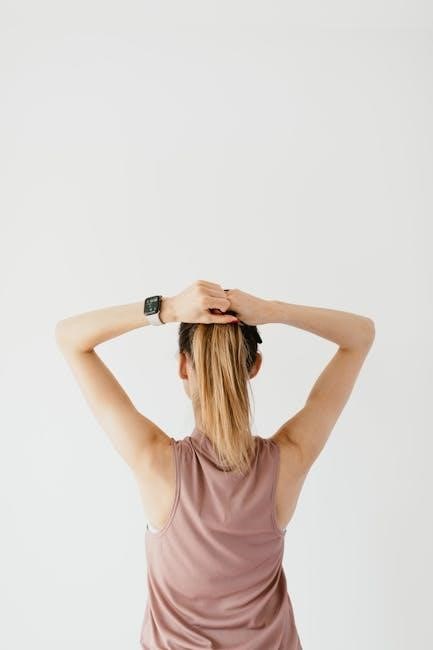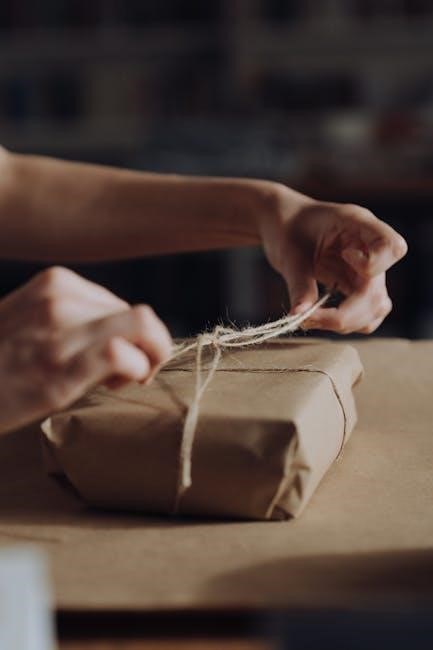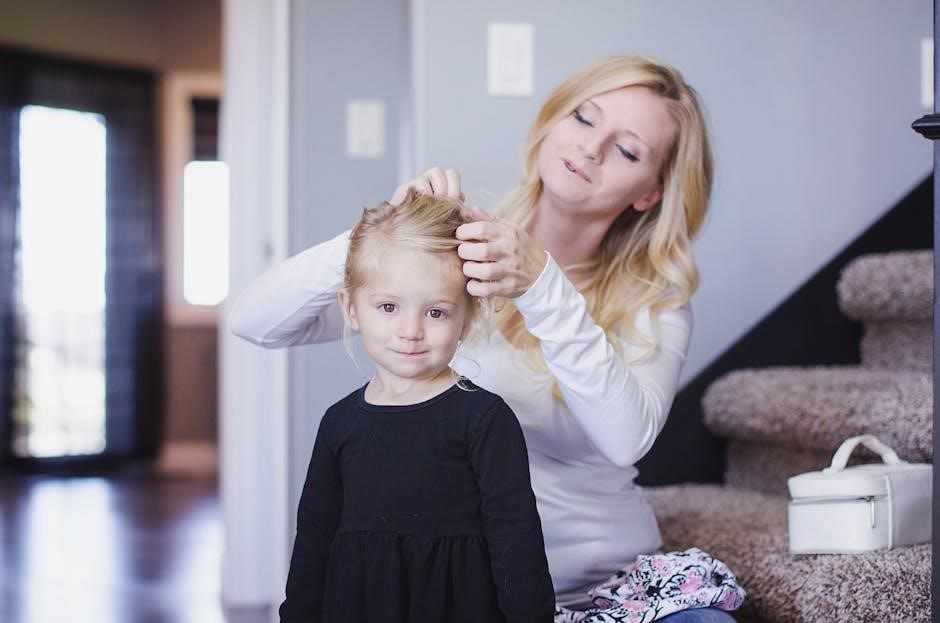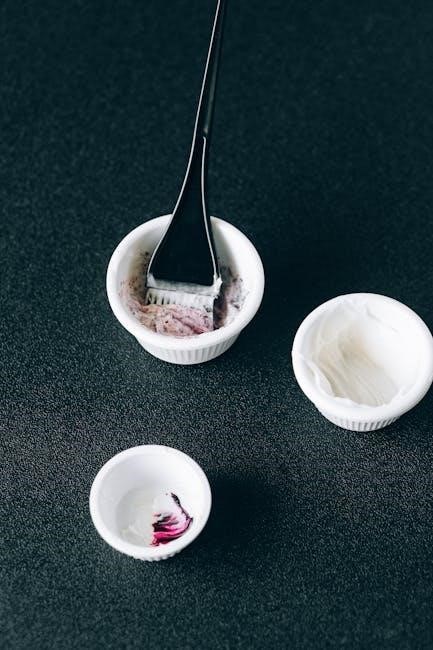
Proper tie-dye aftercare is essential to maintain vibrant colors and fabric durability․ It prevents fading and ensures the design lasts longer, while avoiding common mistakes like harsh washing․
1․1 Importance of Proper After Care for Tie Dye
Proper aftercare for tie-dye fabrics is crucial to preserve the vibrancy of colors and maintain the integrity of the design․ Without proper care, the dyes may bleed or fade quickly, diminishing the aesthetic appeal․ Tie-dye involves intricate processes where dyes penetrate the fabric, and improper handling can disrupt this fixation․ Overwashing or using harsh detergents can weaken the bond between the dye and fabric, leading to dull, faded colors․ Additionally, improper drying methods can cause shrinkage or damage to the material․ By following the right aftercare steps, you ensure the tie-dye design remains vivid and the fabric stays durable for years to come․ Proper care also prevents excessive dye residue from affecting future washes․
1․2 Common Mistakes to Avoid
Common mistakes in tie-dye aftercare can lead to faded colors and damaged fabric․ One major error is untieing the fabric too soon, which disrupts the dye fixation process․ Another mistake is rinsing or washing the fabric in hot water immediately, as this can cause colors to bleed excessively․ Using harsh detergents or bleach is also detrimental, as these chemicals can weaken the dye-fabric bond․ Additionally, some people overlook the importance of letting the dye set for the recommended time, which is crucial for intense, long-lasting colors․ Avoiding these mistakes ensures your tie-dye design remains vibrant and the fabric stays in good condition․
Letting the Dye Set
Allowing the dye to set properly ensures vibrant colors․ Keep the fabric tied in a plastic bag for 24-48 hours to enhance color intensity and durability․

2․1 How Long to Leave the Fabric Tied
Leaving the fabric tied is crucial for proper dye fixation․ Most sources recommend keeping the fabric tied for at least 24 hours, with 48 hours being ideal for intense colors․ During this time, the dye deeply penetrates the fabric, ensuring vibrant results․ The longer the fabric remains tied, the better the colors will set․ Avoid untieing or disturbing the fabric during this period, as it can disrupt the dye distribution․ After the recommended time, rinse thoroughly under cold water to remove excess dye before proceeding with further care steps․ Proper setting time is key to achieving long-lasting, professional-looking tie-dye designs․
2․2 Ideal Setting Time for Intense Colors
For intense colors, the fabric should remain tied for at least 24 hours, with 48 hours being optimal․ This extended setting time allows the dye to fully penetrate the fabric, resulting in richer, more vibrant hues․ The longer the fabric sits tied, the deeper the color fixation, which reduces fading over time․ It’s important to avoid untieing too soon, as this can disrupt the dye’s even distribution․ For darker or more intricate designs, consider leaving the fabric tied for up to 72 hours․ Proper setting time ensures the colors remain bold and the tie-dye pattern stays crisp, making the extra wait worthwhile for professional-looking results․

Rinsing the Tie Dye
Rinse the tie-dye fabric gently under cold water to remove excess dye․ Avoid using hot water initially, as it may cause colors to bleed or fade․ Use a mild detergent if necessary, but focus on removing loose dye particles thoroughly․ Continue rinsing until the water runs clear, ensuring all excess dye is washed away before proceeding to wash the garment․ This step is crucial for preventing color transfer and maintaining the vibrancy of the design․ Proper rinsing sets the foundation for long-lasting, intense colors․ For best results, rinse until the water is nearly clear before moving to the next step․
3․1 First Rinse: Cold Water Only
Begin by rinsing the tie-dye fabric under cold running water only․ This step is crucial for setting the colors and preventing them from bleeding․ Gently rinse the fabric, making sure not to agitate or wring it, as this could disrupt the dye․ Use cold water to help the dye fix into the fabric․ Avoid using hot water during the first rinse, as it can cause the colors to fade or run․ Continue rinsing until the water runs mostly clear, ensuring excess dye is removed․ This initial rinse helps stabilize the colors and prepares the fabric for washing․ Properly rinsing with cold water is essential for maintaining vibrant and long-lasting results․ Always rinse thoroughly before moving on to the next step in the care process․

3․2 Removing Excess Dye Thoroughly
After the initial rinse, focus on removing as much excess dye as possible․ Gently massage the fabric under cold running water to loosen any remaining dye particles․ Avoid wringing or twisting, as this can damage the material or disrupt the pattern․ Continue rinsing until the water runs mostly clear, ensuring all loose dye is removed․ For stubborn excess dye, a mild detergent can be used during this step, but avoid harsh chemicals․ Properly removing excess dye prevents bleeding and fading in subsequent washes․ This thorough rinse is critical for maintaining the vibrancy and longevity of your tie-dye design․ Repeat the process until the water is nearly clear, ensuring the best results for your fabric․
Washing the Tie Dye

Wash tie-dye in hot water with dye-safe detergent first, then use cold water for subsequent washes to preserve colors․ Always wash separately to prevent dye transfer and maintain vibrancy․

4․1 First Wash: Hot Water and Detergent
The first wash is crucial for setting the colors and removing excess dye․ Use hot water and a dye-safe detergent to ensure vibrant results․ Wash the garment alone to prevent color transfer․ Gently agitate or use a delicate cycle to avoid damaging the fabric․ Do not use bleach or harsh chemicals, as they can fade or damage the tie-dye design․ After washing, check if excess dye remains․ If necessary, repeat the process until the water runs clear․ This step ensures the colors stay intense and the fabric remains soft․ Properly washing your tie-dye garment the first time is essential for long-lasting, professional-looking results․

4․2 Subsequent Washes: Cold Water Recommended
After the initial hot water wash, subsequent washes should be done in cold water to preserve the vibrant colors and prevent fading․ Use a mild detergent that is free from harsh chemicals or bleach․ Wash tie-dye garments separately from other clothes to avoid color transfer․ If washing with similar colors, ensure they are also made of natural fibers․ Gently agitate or use a delicate cycle to protect the fabric and design․ Avoid soaking the garment for extended periods, as it may weaken the dye bond․ Air drying is ideal, but if using a dryer, choose a low heat setting․ Following these steps ensures your tie-dye remains colorful and intact for years to come․
Drying the Tie Dye
Air drying is highly recommended to preserve vibrant colors and fabric texture․ If machine drying, use a low heat setting to avoid fading or cracking the dye․
5․1 Air Drying for Best Results
Air drying is the most recommended method for tie-dye garments to preserve vibrant colors and maintain fabric texture․ Avoid direct sunlight, as it can cause fading․ Hang the item loosely to allow air to circulate evenly around the fabric․ For best results, avoid folding or creasing the garment while it dries․ If possible, lay it flat on a clean, dry surface or use a drying rack․ Air drying prevents heat damage from machines, which can cause colors to bleed or fade․ This method ensures the fabric remains soft and the colors stay intense for a longer period․ Proper air drying is key to maintaining the integrity of your tie-dye design․
5․2 Machine Drying: Settings and Precautions
Machine drying can be used for tie-dye garments, but it requires careful settings to protect the fabric and colors․ Use a low heat setting to prevent fading and damage․ Remove any excess dye before machine drying to avoid color transfer․ Place the garment in a dryer on a gentle cycle with a clean towel to absorb moisture and reduce friction․
Avoid high heat, as it can cause colors to bleed or fade․ If possible, air dry first and finish with a low-heat tumble to soften the fabric․ Always wash tie-dye items separately the first few times to minimize color bleeding․ Proper machine drying settings help maintain the vibrancy and durability of your tie-dye design․

Long-Term Care for Tie Dye
For long-term care, wash tie-dye garments in cold water with gentle detergent to maintain color vibrancy․ Avoid bleach or harsh chemicals, as they can damage the fabric and fade colors․ Washing inside out and separately from other clothes helps preserve the design․ Proper storage in a cool, dry place prevents color degradation and ensures the tie-dye remains vibrant for years․
6․1 Washing Instructions for Maintaining Colors
To maintain vibrant colors, wash tie-dye garments in cold water using a mild detergent․ Avoid using bleach or harsh chemicals, as they can damage the fabric and cause fading․ Turn the garment inside out before washing to protect the design from friction․ For the first few washes, consider washing tie-dye items separately to prevent dye from bleeding onto other clothes․ Air drying is recommended to avoid fading caused by heat․ Adding a vinegar rinse after the first wash can help fix colors and extend the life of the design․ Following these steps ensures the tie-dye remains vibrant and intact for years to come․
6․2 Avoiding Bleach and Harsh Chemicals
Avoiding bleach and harsh chemicals is crucial for preserving tie-dye colors․ Bleach can weaken fabrics and cause vibrant hues to fade or discolor․ Similarly, harsh detergents or chemicals can damage the dye bond, leading to premature fading․ Instead, use mild, dye-friendly detergents specifically designed for colored or hand-dyed fabrics․ Natural alternatives like vinegar can help maintain color vibrancy without harming the fabric․ Always check the care label on your dye kit for recommended products․ By avoiding harsh chemicals, you protect both the fabric and the colors, ensuring your tie-dye design remains vibrant and intact for a longer period; This careful approach safeguards the integrity of your unique, handcrafted piece․

Special Tips for Vibrant Colors
For vibrant colors, soak tie-dye in equal parts white vinegar and cold water before washing․ Proper storage in a cool, dry place also preserves intensity and freshness․
7․1 Using Vinegar for Color Fixation
Using vinegar is a simple yet effective method to enhance color fixation in tie-dye․ After rinsing excess dye, soak the garment in a solution of equal parts white vinegar and cold water for about 30 minutes․ This step helps lock the colors, preventing them from fading quickly․ The acid in vinegar acts as a natural mordant, creating a barrier that reduces dye loss during washing․ This method is especially useful for vibrant or dark colors․ It’s a gentle, eco-friendly alternative to commercial color fixatives and works well for most fabric types․ Regular use ensures long-lasting brilliance and maintains the fabric’s softness․
7․2 Storing Tie Dye Garments Properly
Proper storage is key to maintaining the vibrancy and integrity of tie-dye garments․ Store them in a cool, dry place away from direct sunlight, as UV rays can cause colors to fade․ Avoid folding the garment for extended periods, as this can create creases that may weaken the fabric over time․ Instead, hang the item on a padded hanger or lay it flat in a drawer․ Ensure the garment is completely dry and clean before storage to prevent mildew or staining․ For long-term storage, use a breathable fabric bag to protect it from dust and moisture․ Avoid storing tie-dye in plastic bags, as they can trap humidity and damage the fabric․